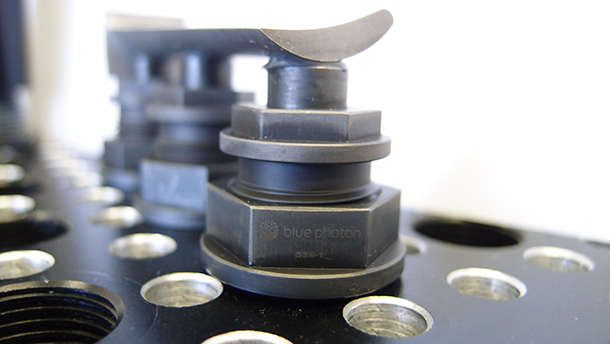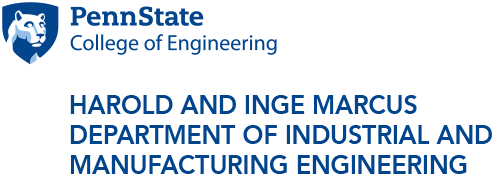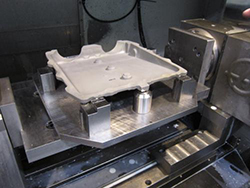
Blue Photo Technology & Workholding Systems, LLC was started based on a Penn State professor's use of adhesives in manufacturing workholding processes.
De Meter tackles workholding challenges through adhesive fixturing
9/8/2015
UNIVERSITY PARK, Pa. — One of the major challenges that manufacturers face is securing a part and holding it in place against the forces of machining. Workholding is the term used when referring to any device that is used to secure a part and hold it into place against those forces.
Edward De Meter, a professor of industrial engineering at Penn State, examined the different workholding methods manufacturers use — including vises, clamps, magnetic fixturing, vacuum fixturing and encapsulation — and decided he wanted to try something different.
“I wanted to create something that has never been used before,” he said. “I really wanted to think outside the box and design a system of workholding that no one had ever thought of before. My focus was to create a method that could be marketed to manufacturers as a solution to their workholding challenges.”
Workholding solutions vary by what part is being manufactured, the material that is used to make the part, and the forces that are applied to it through the manufacturing process. Add to that the demand for accurate, efficient and repeatable performance in a manufacturing setting and the task is even more daunting.
De Meter started to explore the use of adhesives to hold parts in their place, as a way to minimize distortion of the part through the process and allow for a more effective system for manufacturers. Working with adhesives, however, brings its own set of challenges such as applying the bonding material as well as developing a system that breaks the adhesive bond without damaging the part.
“What I didn’t realize fully at the time was just how difficult it is to fight the physics involved in the workholding process,” said De Meter.
In 2002, De Meter was issued a grant by the National Science Foundation to explore and research a method for bonding and debonding a workpiece to a manufacturing fixture in his Precision Mechanics/Workholding Lab in Leonhard Building. This work was also completed in conjunction with the Laser Processing Group at the Penn State Applied Research Laboratory.
De Meter was issued a patent for his process that allowed for a piece to be bonded to a fixture in a manufacturing setting and then debonded within seconds through the use of radiant energy. The name of the system is photo-activated adhesive workholding (PAAW). He also worked with the Office of the Vice President for Research’s then-named Intellectual Property (IP) Office (now called the Office of Technology Management) to expand the use of the adhesives in workholding for commercial use.
Companies such as GE Aviation leased the intellectual property (IP) rights to De Meter’s process, and he designed the equipment the company used in its jet engine and component workholding processes. Soon after, the company selected an outside contractor to manufacture their equipment.
He then worked with the Penn State IP Office to find a company to lease his IP and to become an original equipment manufacturer (OEM). The IP Office could not find anyone, yet De Meter refused give up on the system in which he so passionately believed despite the setback.
Dan Billings, an engineer at a jet engine OEM manufacturer, recognized the immense potential of De Meter’s workholding technology. Once he learned that De Meter was looking for an OEM, he started Blue Photon Technology & Workholding Systems, LLC in 2013, which acquired the exclusive rights to De Meter’s hardware and process of adhesive fixturing.
“In aerospace part manufacturing, workholding is a huge issue,” said Billings, president and CEO of Blue Photon. “The parts that are used are so complex and after watching the PAAW system in use, it just became evident to me that this technology was a game-changer in terms of workholding and could help standardize the process throughout manufacturing.”
Headquartered in Whitehall, Michigan, Blue Photon has grown by more than 50 percent over the last year and has continued expansion by retaining national manufacturing sales representatives due to a steady increase in demand.
De Meter is a passive partner of the company, serving as a consultant, but remains focused on his research as a member of the Penn State faculty.
“PAAW will evolve and grow, as any new process does over time,” said De Meter. “I believe it will be used extensively for many applications requiring precision workholding. However, the potential technical capability of the technology has yet to be realized.”
In the meantime, De Meter continues working on research that combines mechanical engineering and process engineering. He is currently focused on post-process operations for metallic parts made from additive manufacturing (3D printing).




